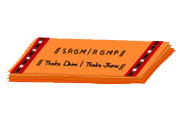Lyrics and Meanings (Keerthana)
Śhrī Purandharadhāsa was in a way, the founder of Kīrthana form which it its melody is based on technical compositions like Gītha whose purpose is to elucidate Rāga forms and Thāḷa patterns.view more
Lyrics and Meanings (Keerthana)
Śhrī Purandharadhāsa was in a way, the founder of Kīrthana form which it its melody is based on technical compositions like Gītha whose purpose is to elucidate Rāga forms and Thāḷa patterns. The emphasis in the Kīrthanas is on its aesthetic excellence and that is why it is considered as the most important part of Karnātic classical music. It was the genius of Śhrī Purandharadhāsa that created Kīrthanas on the basis of which Kruthi form was evolved.
The great master composers who came after Śhrī Purandharadhāsa faithfully followed the tradition and form which he established. The Rāga and Thāḷa aspects are followed by composers like Dīkṣhitar and Śhāma Śhāsthri and purely Rāga aspects by composers like Kśhethragna. But it was Thyāgarāja who brought out the fullest measure all the three aspects – Rāga, Bhāva and Thāḷa of the tradition, founded by Śhrī Purandharadhāsa.
| 1 | Nāgābharaṇa | click here |
| 2 | Nīradha Sama Nīla Kriṣhṇa | click here |












